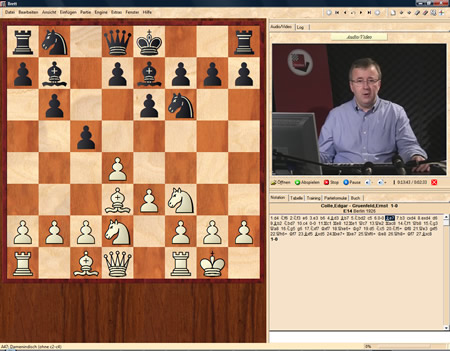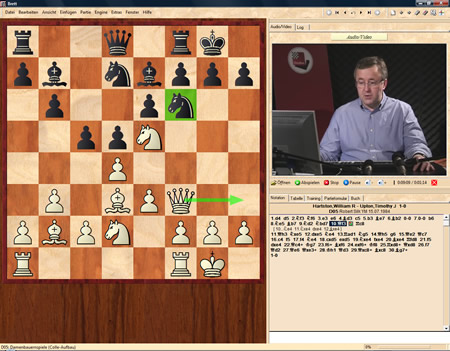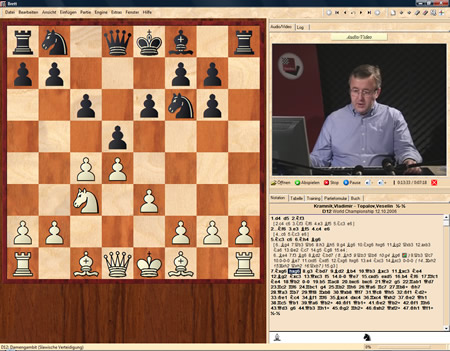دانلود با لینک مستقیم و پر سرعت .

فرمت فایل : WORD (قابل ویرایش)
تعداد صفحات:114
SUBJECT:
The Comparative Effect of Critical Thinking Instruction and Discourse Analysis-Based Instruction on EFL Learners’ Motivation
Table of Contents
Abstract III
Acknowledgments IV
Table of Contents V,VI,VII,VIII
List of Tables IX
List of Figures/Appendixes X
Chapter I
Background and Purpose
1.1 Introduction
1.2 Statement of the Problem 11
1.3 Statement of the Research Questions 14
1.4 Statement of the Research Hypotheses 15
1.5 Definition of the Key Terms
1.5.1 Critical thinking instruction 15
1.5.2 Discourse Analysis-based instruction 15
1.5.3Motivation 16
1.6 Significance of the Study 16
1.7 Limitations and Delimitations
1.7.1 Limitations 18
1.7.2 Delimitations 19
1.7.3 Assumptions 20
Chapter II
Review of the Related Literature
2.1 Introduction 22
2.2 Critical Thinking 22
2.2.1 Theoretical Background 22
2.2.2 The philosophical approach 22
2.2.3 The cognitive psychological approach 24
2.2.4 The History of Critical Thinking 28
2.2.5 Development of Critical Thinking 30
2.2.5.1Critical Thinking in the Average Person 30
2.2.5.2 Critical Thinking in Children 31
2.2.6 Critical Thinker Characteristics 32
2.2.7 Critical Thinking Skills 34
2.2.8 Teaching Critical Thinking 35
2.2.8.1 Debate 37
2.2.8.2 Media Analysis 38
2.2.8.3 Problem Solving 39
2.2.9. Critical thinking and motivation 39
2.3 Discourse 40
2.3.1 Origins of Discourse Analysis 42
2.3.2 Approaches to the phenomenon of discourse 47
2.3.3 Discourse and Context 49
2.3.4 Teaching Discourse Analysis 50
2.3.4.1 The segmentation of discourse 52
2.3.4.2 Sequencing 52
2.3.4.3 Selection and Presentation of language sample
53
2.3.5 Discourse and Background Knowledge 54
2.3.6. Discourse Analysis and Motivation 54
2.4 Motivation 55
2.4.1 Introduction 55
2.4.2 Origins of Motivation 57
2.4.3 Gardner’s motivation theory 60
2.4.3.1 The socio-educational model 61
2.4.3.2 Integrative motivation 63
2.4.3.3 Extended versions of the socio-educational model 66
2.4.4 Other Motivation theories in Educational Psychology and
Language Learning. 69
2.4.4.1 Self-determination theory 70
2.4.4.2 Achievement Motivation theory 71
2.4.4.3. Goal-orientation theory 72
2.4.4.4 Dörneyi and Otto’s Process Model of L2 Motivation 72
2.4.4.5 Dörnyei’s Motivational Framework of L2 Motivation 73
2.4.5 Motivation and Language Teaching
74
Chapter III
METHOD
3.1 Introduction 77
3.2 Participants 77
3.3 Instrumentation 78
3.3.1. Preliminary English Test (PET) 78
3.3.2. Writing Rating Scale 79
3.3.3. Speaking Rating Scale
80
3.3.4. Motivation Questionnaire 80
3.3.5. Instructional Materials 80
3.3.6. Critical Thinking Instruction Guide 81
3.4 Procedure 82
3.4.1. Critical thinking Instruction 83
3.4.2. Discourse Analysis-based Instruction 84
3.5 Design 87
3.6 Statistical Analyses 87
Chapter IV
Results and Discussion
4.1 Introduction 90
4.2.1. Pet Piloting Results 91
4.2.2. Motivation Pretest 92
4.2.3. Testing the Null hypothesis 95
4.3. Discussion 98
Chapter V
CONCLUSION AND PEDAGOGICAL IMPLICATION
5.1 Introduction 104
5.2. Restatement of the Hypotheses 104
5.3. Conclusion 104
5.4. Pedagogical Implications 106
5.5.Implications for EFL Teachers, Learners, and Syllabus
Designers
5.5.1. Implications for EFL Teachers 106
5.5.2. Implications for Learners 108
5.5.3. Implications for Syllabus Designers and Material Developers 109
5.6. Suggestions for Further Research 110
References 111
List of Tables
Table 4.1: Descriptive Statistics of the PET scores at piloting stage 91
Table 4.2: Reliability check result of the PET at pilot stage 91
Table 4.3 Inter rater reliability of PET Writing scores 92
Table 4.4 Inter rater reliability of PET Speaking scores 92
Table 4.5 Tests of Normality of the pretreatment scores distribution 93
Table 4.6 Ranks of pretest scores 93
Table 4.7 Test Statistics a 94
Table 4.8Tests of Normality of the posttest scores distribution 95
Table 4.9 Ranks of posttest scores 95
Table 4.10 Test Statistics a 96
Table 4.11 Wilcoxon Signed Ranks Test 97
Table 4.12 Test Statistics b 97
List of Figures
Figure 2.1 Tremblay and Gardner‘s (1995) Model of L2 Motivation 69
Figure 4.1 Bar graph representing the pretest mean scores of the two groups 94
Figure 4.2 Bar graph representing the posttest mean scores of the two groups 96
Appendixes
Appendix1.PET Test 136
Appendix2. Attitude/Motivation Test Battery (AMTB) 157
Appendix3.Critical thinking instruction Guide 160
Appendix4.Discourse Analysis – Based Instruction Guide 173
CHAPTER I
BACKROUND AND PURPOSE
1.1 Introduction
English is a commonly used language in the world and people with different languages use it to communicate. So recognizing the interplay between motivation and learning English seems to be crucial not only to L2 learners, but also to teachers, parents, and materials developers in educational settings. Examining the recent literature on motivation and learning English highlights how understanding the relationship between motivation, goal setting (Melendy, 2008), and L2 proficiency (Liu, 2007) can make L2 learners more responsible for their own learning by setting realistic goals for themselves, the attainment of which would be self-rewarding.
Motivation is vital to survival, and ties emotion to action. It creates guides purposeful behavior which involves many systems and structure within the body and brain (Ratey,2001). Wlodkowski (1984) identified three sequences in motivation, in the first stage; the teacher creates a positive attitude in learners towards an L2 and provides a collaborative rather than competitive environment in the classroom. In the next stage, learners should have attention and a positive atmosphere created. At the third stage, the teacher engages students in activities and gives them a sense of accomplishment, by praising them for making progress. Motivation and learning psychologically and biologically can’t be separated (Zull, 2002).
Within language learning research, a number of important motivational variables have been identified as contributing to successful language learning and acquisition. Researchers have found that improvement in instruction can cause student continuation and success(Grubb and Associates,1999;Kuh and others,2005). In particular, factors related to instructors and instructions have shown to have an important role in motivating and demotivating language learners (Chambers, 1998; Falout & Maruyama, 2004; Gorham & Millette, 1997; Sakui & Gaeis, 1999). Teachers’ motivational practice could increase students’ motivation (Guilloteaux & Dörnyei, 2008).
Combining neuroscientific understanding of motivation with nowadays knowledge and psychology and education can make new areas to study .Brain has evolved over million years as major organ for ensuring human survival. In gradually changing terms. The neucortex is the main part of brain for thinking ,analyzing and planning used in learning ,so when brain operates it means that feelings are controlled .Feedback about ones’ learning significantly contributes to ones’ sense of control and it’s important for intrinsic motivation and improving learning(Zull,2002). At each educational level, thinking should be practiced in each subject field. This will be hard work for the teacher. It is much easier to teach students to memorize facts and then assess their knowledge by multiple-choice tests. In a course that emphasizes thinking, objectives must include application and analysis, divergent thinking, and opportunities to organize ideas and support value judgments.
If teachers recognize that what they teach today will be replaced by the discoveries of tomorrow, the content-versus-process disagreement will resolve (Schmitt, 2002).So Critical Thinking Based instruction can be one option to use in English classes to increase motivation. Kennedy, M., Fisher, M. B., & Ennis, R. H. (1991)point out that empirical research suggests that students of all intellectual ability levels can benefit from critical thinking instruction. Similarly, Lewis and Smith (1993) argue that critical thinking skills are for everyone, not just the gifted.
Paul (1992) argues that typical school instruction does not support the development of higher-order thinking skills like critical thinking. Paul explains that knowledge is gained with thinking, especially critical thinking. Motivation related to critical thinking that includes skills or abilities and disposition.
Critical thinking is the process of skillfully conceptualizing, applying, reflection, reasoning or communication that affects belief and action (Sezer, 2008).Critical thinking is generally recognized as an important skill for students to acquire in the acquisition of academic language (Connolly, 2000; Davidson, 1998; Davidson & Dunham, 1997).
Based on the importance of critical thinking in education, Fisher and Scriven (1997) stated critical thinking should be thought when thinking skill of students are not enough to face with the problems in the life or education. People do not have critical thinking skill when they are born so teaching critical thinking can be the first step in creating it in them. Critical thinking instruction includes different activities based on skills.
Instructors have different ideas about teaching critical thinking. Some say that it can be taught through lecturing because participants think that critical thinking is an active process whose skills such as analysis, synthesis and reflection must be learnt by performing them(Corten,2005; Grosser & Lombard,2008; Richard & Schmidt,2002).
Cooper (1995), on the other hand, argues that putting students in group learning situations is the best way to foster critical thinking. "In properly structured cooperative learning environments, students perform more of the active, critical thinking with continuous support and feedback from other students and the teacher" (p. 8),and in Case Study /Discussion Method, McDade (1995) describes this method as the teacher presenting a case (or story) to the class without a conclusion. Using prepared questions, the teacher then leads students through a discussion, allowing students to construct a conclusion for the case, in Using Questions, King (1995) identifies ways of using questions in the classroom: Reciprocal Peer Questioning: Following lecture, the teacher displays a list of question stems (such as, "What are the strengths and weaknesses of...). Students must write questions about the lecture material. In small groups, the students ask each other the questions. Then, the whole class discusses some of the questions from each small group.














